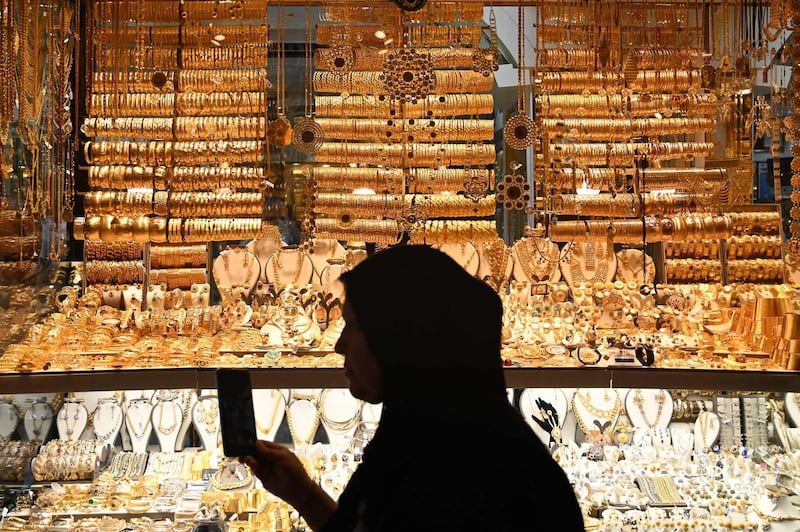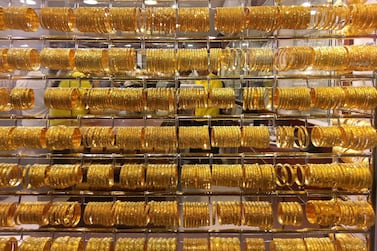Precious metals investors have enjoyed some spectacular returns over the past two months. Gold futures for December delivery surged to $1,470 (Dh5,399) an ounce this week, the highest closing price since May 2013.
But the best days for gold are probably still to come. The 0.25 per cent interest rate cut by the Federal Reserve last Wednesday was the first cut in more than a decade, and has a special significance for investors in precious metals.
The next day gold surged above $1,450 an ounce when Donald Trump said he would impose an extra 10 per cent tariff on $300 billion worth of Chinese imports on September 1 due to failed trade talks.
When US interest rates start to decline, so does the opportunity cost of holding gold. That is to say the money you could have earned on a deposit versus zero interest on gold. This tends to leverage the gold price upwards.
Falling US interest rates usually follow rather than seek to ward off stock market declines, so this time has been somewhat different with US stock indexes still posting all-time highs.
However, this proactive response to a weakening US and global economy might only cheer share owners for a brief period. It is unlikely to fool them for very long with a trade war worsening.
Interest rates are coming down to offset the impact of aggressive tariffs and falling private domestic and business investment. What does that mean for the future profit outlook for US companies and therefore share prices - let alone domestic inflation?
In the immediate aftermath of the great recession of 2008-09, the best performing assets to own were silver and gold, in that order.
Silver prices whizzed from $8.50 to $49 an ounce; and gold from $900 to $1,923. Shares in gold and silver producers grew by far larger percentages due to the leveraging effect of fixed costs.
What goes around comes around. Precious metals investors have had to patiently wait out a six-year bottoming process in prices. That broke out decisively two months ago.
This long hiatus has frozen capital investment in new mines choking future supply that will help turbo-charge the price recovery.
At first, silver prices lagged the gold price advance and that worried observers who have written about too many fake breakouts in recent years. But in mid-July silver played catch-up with gold and then some, with $16.50 an ounce by the end of the month.
That said, the silver price is most likely just at the start of a serious bounce that will leave gold behind in terms of percentage rises. There are past precedents for such optimism.
In July 2016, gold jumped to $1,377 - lower than today - and yet the price of silver was much higher at $21 per ounce. Indeed, silver is still 30 per cent lower than its high three years ago while gold is a few per cent above that level, so silver has much further to go.
Historically, the ratio of the gold price to the silver price has been much lower than it is now at around 85, with the long-term average being 55.
Commodity prices have a tendency to revert to long-term averages, and if silver were to reset against the current gold price that would mean $26 silver, without any further advance in the price of gold.
Not that gold prices are about to standstill. Investors are only just waking up to the potential of another gold bull market with many remaining unconvinced by the gold price breakout.
There have already been some outstandingly good investments. Readers who picked up the SILJ junior silver and gold miners' ETF two months ago after the tip in this column have been rewarded with a 50 per cent return, the best performance of any non-financially leveraged precious metals ETF.
The GDXJ junior gold miners ETF is up around 38 per cent over the same period. It could be that silver now has the edge on gold, though the shiniest of metals is notoriously volatile and its charts impossible to analyse.
Keeping a precious metals portfolio that is balanced between gold and silver assets is one way to sleep better at night. Remember too that silver may peak long before gold; it was almost six months in 2011.
On the other hand, we are probably a long way from such days if the example of a decade ago holds true. A double top for gold at $1,923 is one possible scenario; or a 1980-style spike with a quadrupling of prices. The impact on silver would be a Bitcoin-style price explosion.
August could be a quieter month. But the real fun is just around the corner as monetary policy is close to reaching its limits in terms of sustaining stock, bond and real estate markets.
Then precious metals will be the only game in town.
Peter Cooper has been writing about Gulf finance for two decades







